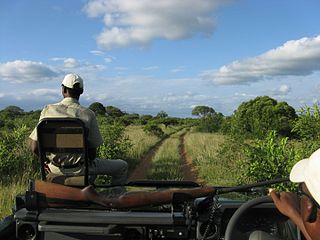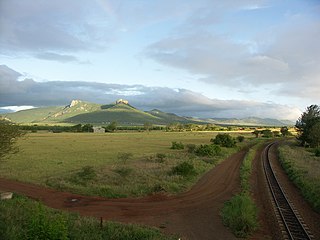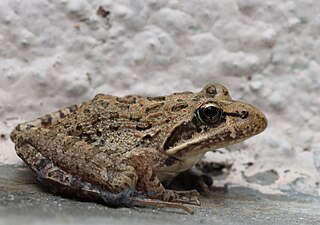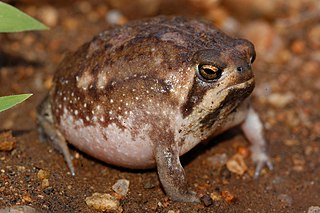
The Drakensberg is the eastern portion of the Great Escarpment, which encloses the central Southern African plateau. The Great Escarpment reaches its greatest elevation – 2,000 to 3,482 metres within the border region of South Africa and Lesotho.

Phinda Private Game Reserve, formerly known as Phinda Resource Reserve, is a 170 km2 (66 sq mi) private game reserve situated in KwaZulu-Natal, South Africa, between the Mkuze Game Reserve and the Greater St. Lucia Wetland Park. Designated in 1990, Phinda is derived from a Zulu phrase "Phinda Izilwane" meaning 'return of wildlife', or more accurately 'do again'.

Mkuze, also named Mkhuze or uMkhuze is a small town in Northern KwaZulu-Natal, South Africa. It is located approximately 350 km from the city of Durban. It is along the N2 road en route to Johannesburg, Eswatini and Mozambique; between the Mkuze River and Intaba Yemikhovu. Mkuze is some distance from other small towns such as Hluhluwe (50 km), Nongoma (76 km), Pongola (65 km), and Jozini (25 km). Mkuze is the seat of Umkhanyakude District Municipality.

Breviceps is a genus of frogs in the family Brevicipitidae. Species in the genus Breviceps are commonly known as rain frogs or short-headed frogs. They occur in arid to semiarid climates of Eastern and Southern Africa.

Bilbo's rain frog is an amphibian species in the family Brevicipitidae, endemic to South Africa. The frog was named after Bilbo Baggins, the main character from The Hobbit by J.R.R Tolkien. The frog was named as such because the scientist who discovered it used to read the novel to his children. Its natural habitats are temperate grasslands and edges of wood plantations, wherein it spends most of its time in its burrow. The species is threatened by construction, maintenance of roads, silviculture, general habitat degradation/habitat loss, and by road traffic. As a result, it is listed as Near Threatened in the IUCN Red List of Threatened Species.

Breviceps fuscus, also known as black rain frog, plain rain frog, brown short-headed frog, and Tsitsikamma rainfrog, is a species of frogs in the family Brevicipitidae. It is endemic to the southern coast of South Africa.

The cape rain frog or giant rain frog is a species of frog in the family Brevicipitidae. Adults grow up to 45 mm in length. It was the first African frog species to be scientifically described by Carl Linnaeus in 1758, under the name Rana gibbosa. It is the most common and largest of rain frogs. The name "rain frog" that is applied to the genus refers to a belief that these frogs bring rain.

The desert rain frog, web-footed rain frog, or Boulenger's short-headed frog is a species of frog in the family Brevicipitidae. It is found in Namibia and South Africa. Its natural habitat is the narrow strip of sandy shores between the sea and the sand dunes. It is threatened by habitat loss by such factors as mining and tourism.

The Mozambique rain frog, also known as the flat-faced frog, is a species of frog in the family Brevicipitidae. It is found in Botswana, Democratic Republic of the Congo, Eswatini, Malawi, Mozambique, South Africa, Tanzania, Zambia, Zimbabwe, and possibly Lesotho. Its natural habitats are dry savanna, moist savanna, temperate shrubland, subtropical or tropical dry shrubland, temperate grassland, subtropical or tropical dry lowland grassland, subtropical or tropical high-altitude grassland, arable land, pasture land and rural gardens.

Rose's rain frog or Rose's rainfrog is a species of frog in the family Brevicipitidae. It is endemic to the sandveld of south-western coastal South Africa. It is less-frequently known as Rose's short-headed frog, Rose's Blaasop, or the sand rain frog. Some treat Breviceps fasciatus as a synonym of this species, although other authorities have expressed doubt.

Gray's stream frog is a fairly small species of frog in the family Pyxicephalidae. It is a ground dweller, living mainly in vegetation such as sedges, generally brown, slenderly built and agile, with long, practically unwebbed toes.

Poyntonophrynus fenoulheti is a species of small toad found in southern Africa. It is known under many common names, including Fenoulhet's toad, Fenoulhet's pygmy toad, and northern pygmy toad. It grows to a maximum size of 43 mm.

Latrodectus umbukwane, commonly known as the Phinda button spider, is a species of the spider in the genus Latrodectus described in 2019, named after the Phinda Private Game Reserve where research specimens were collected. As of 2019, it is known only from critically endangered sand forest environments in northern Zululand, KwaZulu-Natal, South Africa. It is believed to be the largest member of its genus.
A Bilingual Field Guide to the Frogs of Zululand is a field guide meant to help readers identify frogs found in the Zululand region of South Africa's KwaZulu-Natal province and to dispel misconceptions about frogs among AmaZulu of the region. This book is written in English and by co-authors Doctors Fortunate Mafeta Phaka, Edward C. Netherlands, Donnavan J.D. Kruger, and Professor Louis H. du Preez from the North-West University. Translation of the text from English to IsiZulu were done by Manzo Khulu. The South African National Biodiversity Institute published the book as part of their Suricata range of peer-reviewed publications meant to be an inclusive platform for all Africans and the continent's biodiversity

Breviceps passmorei, or Passmore's rain frog or Ndumo rain frog is a species of frog in the genus Breviceps endemic to South Africa.
Sclerophrys pusilla is a species of toad in the family Bufonidae. It is found in Angola, northern Namibia, Botswana, northeastern South Africa, Zimbabwe, Mozambique, Zambia, Tanzania, southern Kenya, Uganda, eastern Ethiopia, parts of South Sudan, Gabon and Cameroon, as well as the Central African Republic. The specific name pusilla means "small" in Latin, and refers to the fact that this frog is smaller than others in the Sclerophrys genus.
Hyperolius inyangae, commonly known as the Nyanga long reed frog, is a species of frog in the family Hyperoliidae.

Louis Heyns Du Preez is a South African professor of zoology who specialises in parasitology and herpetology at the North-West University. Du Preez is best known for his research on South African frog species, writing a widely used wildlife guide for the frogs of Southern Africa, and contributions to global parasitology with special focus studies on polystome worms. His contributions to polystome research have led to a recently discovered Malagasy frog species, Blommersia dupreezi, being named in his honour.
Fortunate Phaka is a South African environmental scientist, author, environmental television producer and science communicator. He is best known for research focused on herptiles, studying the relationship between biodiversity and people's cultural diversity, and writing South Africa's first comprehensive wildlife guide for frogs to be jointly published in an Indigenous language (IsiZulu) and English. His academic affiliations for postdoctoral research are with South Africa's North-West University and the South African Institute for Aquatic Biodiversity, as well as Belgium's Hasselt University. Phaka is also on the board of directors for Youth 4 African Wildlife, a youth-focused wildlife conservation non-profit organisation operating in Southern Africa. Phaka also has a superhero scientist, called The Scribe, based on him and his work.
















